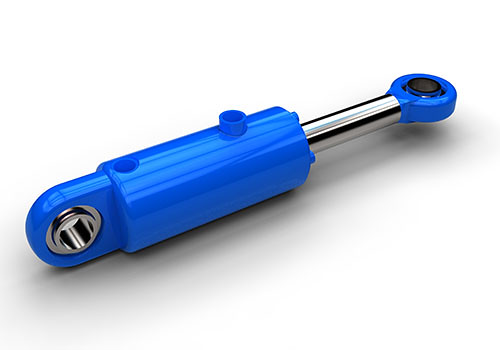If you have spare hydraulic cylinders that you need to store, it’s important that they remain in optimum condition and don’t deteriorate over time. Failing to prepare the cylinders correctly for storage, or storing them in inappropriate conditions, can be an expensive mistake; they may not function properly later and will probably need to be replaced.
Correct storage, therefore, is essential to preserve the life and performance of hydraulic cylinders. In this short guide, we outline the best way to store your spare cylinders so that you don’t end up denting your profits to purchase replacements unnecessarily.
The Best Way to Store Hydraulic Cylinders
When you’re storing hydraulic cylinders for any length of time, make sure you follow these points:
Location
Hydraulic cylinders should be stored, fully retracted, in a clean and dry area, free from vapours and acids. The ambient air should be consistently above 5°C, so an indoor space is preferable.
Pre-Storage Preparations
To keep the hydraulic cylinder in the best possible condition, ensure that you:
- Liberally coat the internal surfaces of clevis and eye bushes and bearings with grease, especially if they are made from steel.
- Use a suitable product, such as Denso tape which is non-hardening and non-cracking at different temperatures, to protect exposed chrome on the rod. The rod should be fully retracted before the tape is applied, as attempting to retract it afterwards could cause the rod seal to become damaged.
- Block the service ports with steel, avoiding the use of plastic or blanking plates.
Preventing Corrosion
When moving hydraulic cylinders into storage, you need to consider whether to leave it empty (and, therefore, filled with air) or to fill it with oil.
If you leave the cylinder empty, then as the air temperature decreases, the dew point may be reached, which leads to moisture appearing on the inside of the cylinder. This can cause rusting on the inside of the cylinder tube and will, in the medium-term, affect its performance. Volumetric efficiency, the lifespan of the piston seal, and the lifespan of the tube can all be negatively diminished.
Filling the cylinder with clean hydraulic oil can prevent rusting and pitting from occurring. Always fill the cylinder through the rod-end port to prevent hazardous pressurisation. However, it is important to make sure that the external temperature isn’t likely to cause the static pressure to exceed the working pressure of the cylinder, and that service port plugs are appropriate to the working pressure too. Also, attach warning tags to both service ports.
Long-Term Storage
If you plan to store a hydraulic cylinder for more than six months, it should be reconnected to a hydraulic system and moved from the start to the end position, ideally at least five times in six months.
Contact Hydrastar for Expert Technical Advice
If you need specialist technical advice about preparing your hydraulic cylinders for storage, or any other aspect of hydraulic design and maintenance, get in touch for an efficient and cost-effective solution.
Image source: Flickr



